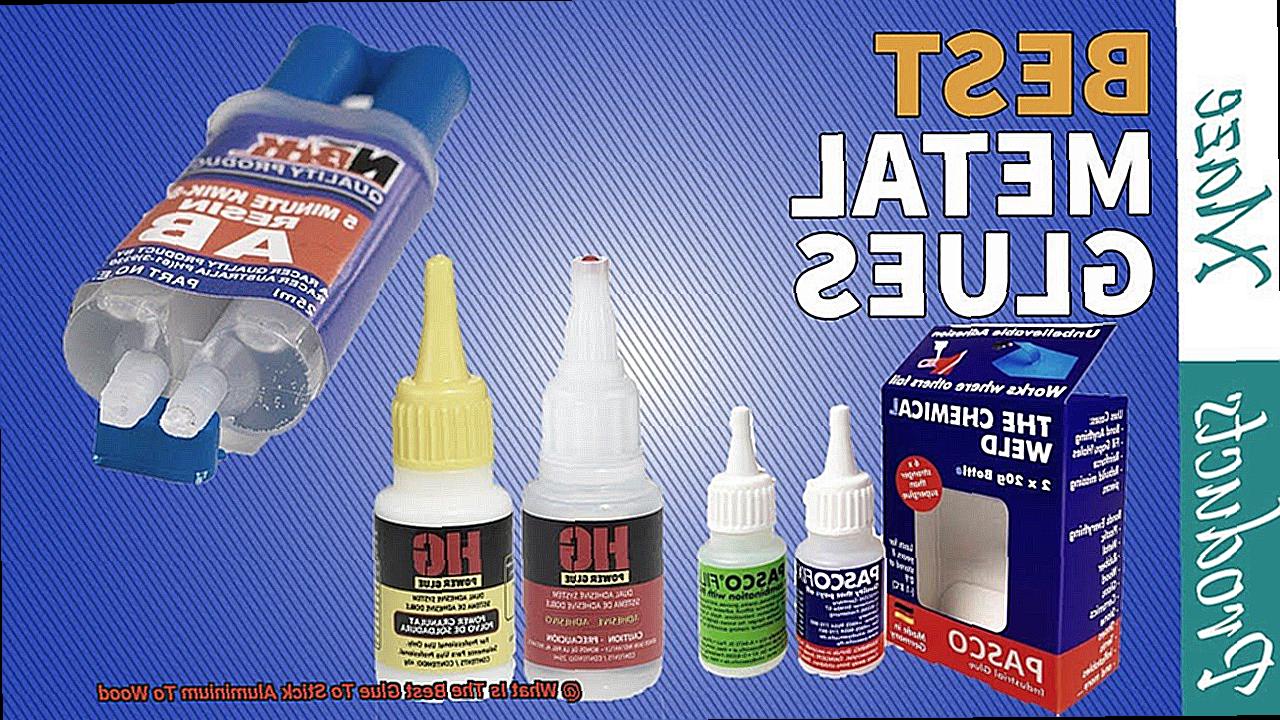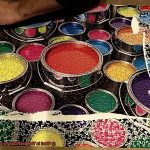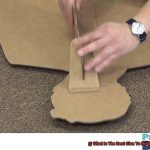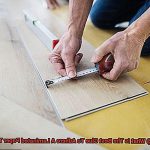Looking for the perfect glue to stick aluminum to wood?
We’ve got you covered. Whether you’re a DIY fanatic or a seasoned pro, finding the right adhesive can be overwhelming.
But fear not, we’ve done the legwork for you. In this blog post, we’ll reveal the ultimate glue for bonding aluminum to wood.
We know how crucial it is to have a bond that lasts and withstands any challenge. From heavy-duty projects to delicate designs, we’ve found the holy grail of adhesives.
So let’s jump right in and explore the world of glues, so you can achieve that rock-solid connection between aluminum and wood.
Factors to Consider When Choosing the Best Glue
Contents
- 1 Factors to Consider When Choosing the Best Glue
- 2 Adhesive Strength
- 2.1 Understanding Adhesive Strength:
- 2.2 Epoxy Adhesive: The Ultimate Bonding Agent:
- 2.3 Polyurethane Adhesive: Flexibility Meets Versatility:
- 2.4 Super Glues: Instant Gratification, Sufficient Strength:
- 2.5 Surface Preparation: The Key to Victorious Bonding:
- 2.6 Application Techniques: The Harmonious Melody of Bonding:
- 3 Compatibility with Aluminium and Wood
- 4 Curing Time
- 5 Temperature Resistance
- 6 Intended Use of Bonded Pieces
- 7 Epoxy: The Strongest Bond for Aluminium and Wood
- 8 Polyurethane: Versatile and Weather-Resistant Adhesive
- 9 Cyanoacrylate (Super Glue): Fast-Setting and Strong Bonding
- 10 Construction Adhesives: PVA-Based Adhesives for General Applications
- 11 Conclusion
Choosing the right glue for bonding aluminum to wood is essential for a strong and durable bond. With a wide variety of adhesive types and brands available, it can be overwhelming to make the right choice. In this article, we will explore the factors you should consider when selecting the best glue for this specific application.
Adhesive Type:
Consider different adhesive types such as epoxy, polyurethane, and cyanoacrylate (super glue). Epoxy provides exceptional bonding strength and durability, suitable for various applications. Polyurethane offers flexibility, good adhesive strength, and resistance to temperature variations. Cyanoacrylate adhesives are fast-setting and ideal for smaller projects or temporary bonds.
Bond Strength:
Ensure the glue you choose offers high bond strength specifically designed for metal-to-wood applications. A strong and durable bond is crucial to withstand stresses and strains.
Compatibility:
Check if the glue adheres well to both aluminum and wood surfaces. Some adhesives may not work effectively with certain types of aluminum or wood, leading to weak bonds or failure. Perform a test bond on scrap materials to ensure compatibility before proceeding with the project.
Drying Time:
Consider the drying time of the glue, especially if time constraints exist. Some glues require longer drying times, while others offer quick setting or curing times.
Temperature Resistance:
Choose a glue that can withstand high temperatures, if necessary. The bonded materials may be exposed to extreme heat conditions, so it’s important to select a glue that won’t compromise bond strength or integrity.
Application Method:
Consider the ease of application for each glue option. Some glues come in convenient applicator bottles or tubes, while others may require additional tools or mixing before use.
Safety Precautions:
Always prioritize safety when working with adhesives. Read and follow the manufacturer’s instructions and safety guidelines to ensure proper usage and minimize potential health risks.
Adhesive Strength
In the battle to bond aluminum to wood, a glue with Herculean adhesive strength is like a superhero swooping in to save the day. In this blog post, we will explore the significance of adhesive strength and delve into the top glue options that can forge unbreakable bonds between these two stubborn materials.
Understanding Adhesive Strength:
Adhesive strength forms the bedrock of any successful bonding endeavor. It is the measure of a glue’s ability to create a robust and enduring connection between different materials. When it comes to aluminum and wood, a high adhesive strength is paramount to withstand diverse environmental conditions and ensure unwavering durability.
Epoxy Adhesive: The Ultimate Bonding Agent:
Enter epoxy adhesive, wielding unparalleled adhesive strength and an arsenal of versatility. Comprising a resin and a hardener, epoxy engages in a chemical tango upon mixing, resulting in a bond that scoffs at even the harshest conditions. With its ability to adhere to various surfaces, epoxy emerges as the ideal choice for joining aluminum and wood.
Polyurethane Adhesive: Flexibility Meets Versatility:
Polyurethane adhesives boast remarkable adhesive properties and possess the flexibility to generate resilient bonds. These adhesives excel in bonding dissimilar materials like aluminum and wood, defying vibrations and movements to forge a steadfast and reliable connection.
Super Glues: Instant Gratification, Sufficient Strength:
For instantaneous bonding gratification, look no further than cyanoacrylate adhesives, affectionately dubbed super glues. Although their adhesive strength may not rival that of epoxy or polyurethane adhesives, they still offer sufficient might for many applications involving aluminum and wood bonding.
Surface Preparation: The Key to Victorious Bonding:
To achieve adhesive strength supremacy, meticulous surface preparation is essential. Both the aluminum and wood must be purified, desiccated, and liberated from the clutches of contaminants. Gently sanding the surfaces enhances their grittiness, enabling superior bonding and maximizing adhesive strength.
Application Techniques: The Harmonious Melody of Bonding:
Applying the glue uniformly on both surfaces and pressing them together with unwavering determination are paramount to achieving optimal adhesion. Adhering to the manufacturer’s instructions regarding curing time and any supplementary steps ensures a symphony of success.
Compatibility with Aluminium and Wood
Though an unlikely pairing, with the right adhesive and techniques, you can create a bond that is both formidable and durable. In this blog post, we will explore the key considerations when bonding aluminium and wood, including compatibility, adhesive selection, and application techniques that will ensure your project withstands the test of time.
Compatibility:
When it comes to bonding aluminium and wood, compatibility is paramount. Aluminium, a lightweight and corrosion-resistant metal, requires an adhesive that can adhere well to its surface. Wood, being a natural material with varying density and porosity, poses its own challenges. Therefore, selecting a glue that bonds effectively with both materials is crucial for achieving a strong and lasting bond.
Adhesive Selection:
Several adhesives have proven compatible with both aluminium and wood. Let’s examine three popular options:
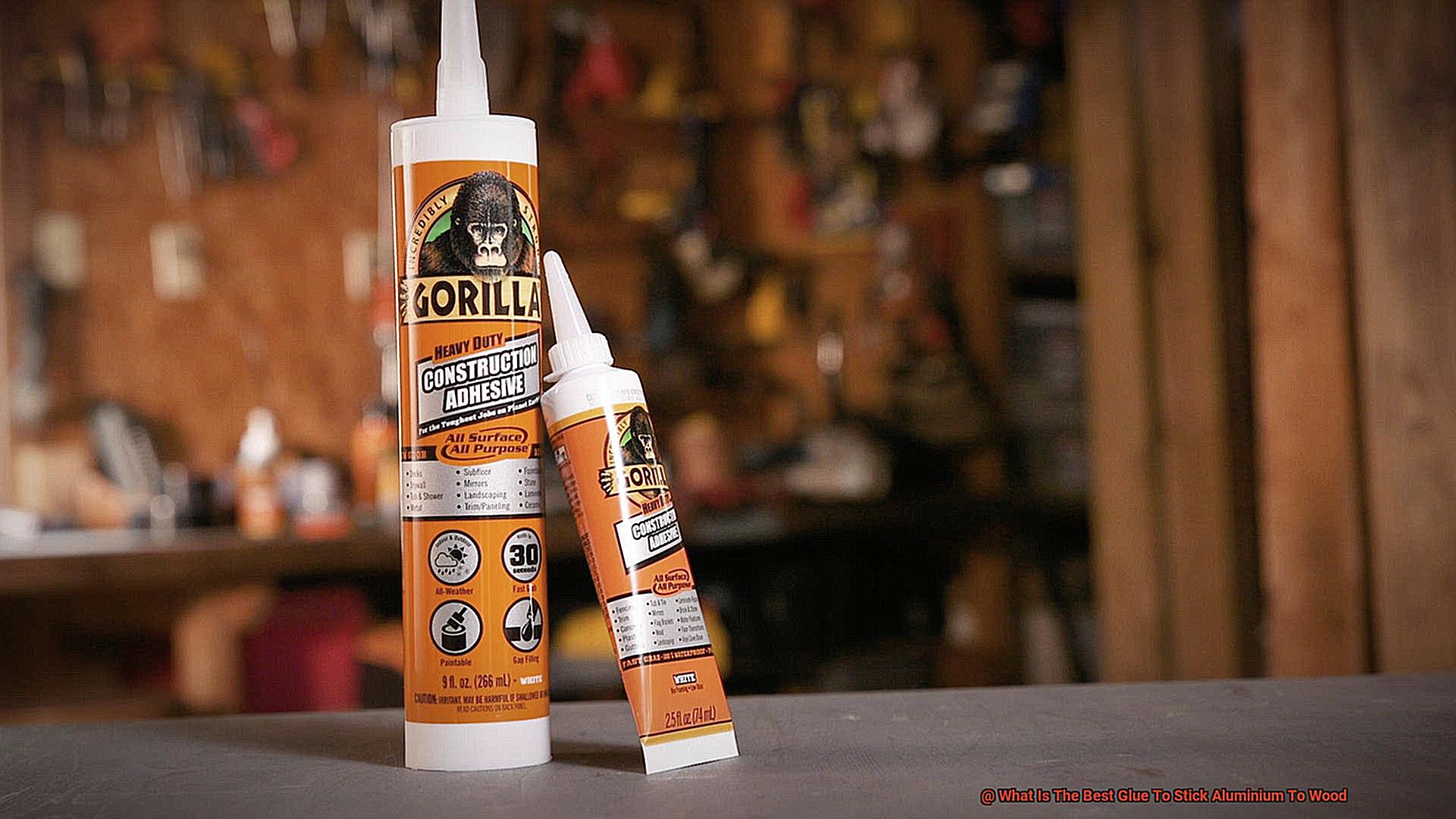
- Epoxy Adhesives: With exceptional strength and durability, epoxy adhesives are often the go-to choice for bonding aluminium and wood. Comprising two components that must be mixed prior to application, epoxy provides a robust bond capable of withstanding various stresses.
- Polyurethane Adhesives: Renowned for their flexibility and ability to tolerate differential expansion rates between aluminium and wood, polyurethane adhesives are another suitable option. Their excellent water resistance makes them ideal for outdoor applications as well.
- Cyanoacrylate (Super Glues): While not as commonly used for larger projects, certain types of cyanoacrylate adhesives can be effective for smaller bonding tasks involving aluminium and wood. However, it is crucial to choose a cyanoacrylate specifically designed for this purpose to ensure optimal adhesion.
Proper Application Techniques:
Irrespective of the adhesive chosen, proper application techniques are essential for a successful bond. Let’s outline some key steps:
- Surface Preparation: Thoroughly clean and dry the surfaces to be bonded, removing any dirt, grease, or oxidation that may hinder the adhesive’s ability to adhere properly.
- Application: Apply the adhesive evenly to both the aluminium and wood surfaces, following the manufacturer’s instructions regarding the amount to use and any specific mixing requirements for two-component adhesives like epoxy.
- Clamping: If necessary, use clamps or other appropriate methods to hold the materials together firmly while the adhesive cures. This will ensure maximum contact and minimize potential gaps in the bond.
- Curing Time: Allow sufficient time for the adhesive to cure according to the manufacturer’s instructions before subjecting the bond to stress or load.
Additional Considerations:
It is worth noting that mechanical fasteners, such as screws or rivets, can be used in conjunction with adhesives for added strength and stability when bonding aluminium and wood. This combination can provide a more secure connection.
Curing Time
Today, we embark on an exciting journey into the world of curing time and its pivotal role in achieving flawless bonds between aluminium and wood. Grab your trusty research notes as we dive into the depths of this topic, uncovering key points that will empower you to choose the ideal glue for your next project.
The Power of Curing Time:
Curing time, my friends, is the secret ingredient that transforms mere glue into a strong, unyielding bond. When it comes to bonding aluminium and wood, selecting a glue with an appropriate curing time is the key to success. Let’s explore some adhesive options and their unique curing characteristics.
Epoxy Adhesives: Unleash the Power of Endurance
Epoxy is a stalwart choice for aluminium-wood bonding thanks to its exceptional strength and unwavering durability. However, be prepared to exercise patience, for epoxy adhesives typically require longer curing times compared to their counterparts. You may find yourself waiting several hours or even several days before the bond reaches its full potential.
Polyurethane Adhesives: Flexibility and Resilience Combined
If you seek flexibility and moisture resistance in your bond, look no further than polyurethane adhesives. These versatile marvels thrive in both indoor and outdoor environments. As you embark on your bonding journey with polyurethane adhesives, remember to grant them the gift of time. Allow them to cure for a few hours up to an entire day for optimal results.
Cyanoacrylate Adhesives (Superglue): The Need for Speed
For those moments when haste is essential, cyanoacrylate adhesives, also known as superglue, come to the rescue with their lightning-fast curing times. These glues can set within seconds or minutes of application, granting you the convenience of immediate bonding. Nonetheless, be aware that while superglue provides quick initial adhesion, it may lack the long-term strength offered by epoxy or polyurethane adhesives.
Environmental Factors:
Ah, my dear friends, let us not forget the influence of external forces on our curing time quest. Temperature, humidity, and the very materials we seek to unite can sway the outcome. Heed this knowledge: higher temperatures hasten the process, while chillier climates may slow it down. Additionally, each glue may have specific preferences regarding temperature and humidity conditions for optimal curing. Respect these requirements and heed the manufacturer’s guidance to unlock the full potential of your bond.
Temperature Resistance
Step into the captivating world of adhesives, where the dance of temperature resistance determines the success of bonding aluminum to wood. Whether you’re a DIY enthusiast or a seasoned craftsman, understanding the intricate steps of temperature resistance will ensure that your projects withstand the test of time and environmental conditions.
The Heat Is On:
In the sizzling realm of high temperatures, two crucial aspects demand our attention: the maximum heat a glue can endure and its ability to perform within a specific temperature range. Let’s take a closer look at these fiery steps.
High Temperature Resistance:
Picture your creation basking in the scorching sun or nestled near a roaring fireplace. To prevent adhesive failure, you need a glue that can handle the heat. Enter epoxy adhesives, known for their exceptional ability to withstand temperatures up to 300 degrees Fahrenheit and beyond. With epoxy as your trusted partner, your project will thrive even in the hottest environments.
Baby, It’s Cold Outside:
Now let’s glide gracefully into the world of freezing temperatures. In icy conditions, adhesives often become brittle and lose their grip. To ensure an unbreakable bond in chilly climates, you need a glue that remains flexible.
Low Temperature Flexibility:
Cue the entrance of silicone adhesives, our heroes in freezing landscapes. These remarkable glues maintain their bonding properties even in sub-zero temperatures, making them ideal for projects that brave frosty conditions. With silicone by your side, your outdoor endeavors will conquer the cold without fear of adhesive failure.
The Sweet Spot:
Beyond extreme temperatures lies the enchanting realm of optimal temperature ranges. This versatile dance step is especially crucial if your project faces fluctuating temperature conditions.
Wide Temperature Range:
Behold, the glues that excel in handling both scorching heat and bone-chilling cold. These flexible and versatile adhesives offer superior bonding strength over a broader spectrum of temperatures, ensuring that your project remains intact regardless of the weather’s mood swings. When uncertain about the temperature fluctuations your creation will encounter, these glues with wide temperature range capabilities become your perfect partners.
Intended Use of Bonded Pieces
Selecting the appropriate glue for bonding aluminium to wood is vital to ensure a strong and durable bond. The intended use of the bonded pieces, whether in construction, furniture manufacturing, or DIY projects, determines the glue choice. In this article, we will explore why considering the intended use is important, examine different glues available, highlight their benefits and drawbacks, and offer tips for successful bonding.
Types of Glues:
- Epoxy Resin: Epoxy is a popular option due to its exceptional strength and durability. It creates a bond that can withstand high temperatures, moisture, and physical stress. However, working with epoxy can be challenging due to its longer curing time and precise mixing ratios.
- Polyurethane Adhesive: These adhesives offer good flexibility and bond strength, making them suitable for applications requiring movement or vibration resistance. They also resist moisture and temperature changes well. However, they may not provide as strong a bond as epoxy in heavy-duty applications.
- Cyanoacrylate (CA) Glue: Commonly referred to as super glue, CA glue forms a quick-setting and strong bond between aluminium and wood. It is ideal for small-scale projects or repairs due to its instant bonding properties. However, it may not be suitable for applications exposed to moisture or extreme temperatures.
Tips for Successful Bonding:
- Surface Preparation: Clean both aluminium and wood surfaces thoroughly and remove any contaminants like oil or dust. Sanding or roughening the surfaces improves adhesion.
- Proper Application: Adhere to the manufacturer’s instructions regarding application techniques and curing times. Apply an even layer of glue on both surfaces and firmly join them together, applying pressure if necessary.
- Testing and Evaluation: Conduct a small-scale test before committing to a larger project. This helps determine if the chosen glue is suitable for the intended use and provides the desired bond strength.
Epoxy: The Strongest Bond for Aluminium and Wood
When it comes to joining aluminium and wood, finding the right adhesive can be a challenging task. However, there is one glue that stands out from the rest – epoxy. Renowned for its exceptional strength and durability, epoxy is the perfect partner for creating a strong and long-lasting bond between these diverse materials. In this article, we will delve into why epoxy is considered the best choice for bonding aluminium and wood.
Exceptional Strength:
Epoxy is known for its unparalleled strength, surpassing other adhesives like super glue or general-purpose glue. This exceptional strength ensures a reliable bond that can withstand heavy loads, impact, vibration, and bending. Whether you are joining aluminium trim to wooden furniture or securing aluminium parts to wooden structures, epoxy provides the strength required for these demanding applications.
Resistance to Environmental Factors:
Epoxy offers excellent resistance to heat, moisture, and chemicals. This means that it can withstand harsh environmental conditions without compromising the bond between aluminium and wood. Whether you are working on an indoor project or an outdoor structure exposed to the elements, epoxy’s resistance ensures the bond remains intact over time.
Surface Preparation:
To achieve optimal results with epoxy bonding, proper surface preparation is crucial. Both the aluminium and wood surfaces should be clean, dry, and free from any contaminants or oils that could hinder the bonding process. It is advisable to lightly sand both surfaces to create a roughened texture, enhancing the adhesive’s grip.
Application Technique:
To apply epoxy, mix the resin and hardener according to the manufacturer’s instructions. Apply a thin layer of the mixed epoxy onto one surface (either the aluminium or wood), then firmly press the two surfaces together. Use clamps or other means of securing the materials in place until the epoxy cures.
Curing Time and Strength Development:
The curing time for epoxy can vary depending on the specific product used, but it generally takes several hours to fully cure. It is important to follow the manufacturer’s instructions regarding curing time and temperature conditions for best results. During the curing process, epoxy undergoes a chemical reaction, developing its maximum strength. Once cured, epoxy creates a strong bond between aluminium and wood that is resistant to impact, vibration, and bending.
Polyurethane: Versatile and Weather-Resistant Adhesive
Polyurethane adhesive is a true chameleon in the world of adhesives. It can handle any material you throw at it, whether it’s metal, wood, plastic, or glass. This versatility makes it the go-to choice for a wide range of projects, from constructing skyscrapers to creating intricate DIY crafts. No matter what you’re working on, polyurethane adhesive will rise to the occasion.
But what sets polyurethane adhesive apart from other adhesives is its exceptional resistance to weather. This adhesive can withstand extreme temperatures and exposure to moisture without batting an eye. So whether you’re bonding aluminum frames to wooden structures or sealing gaps in outdoor furniture, polyurethane adhesive will hold strong against rain, snow, heat, and cold.
Strength is another feather in polyurethane adhesive’s cap. When it forms a bond between aluminum and wood, it creates a connection that is unbreakable. This strength is crucial for applications where the bond needs to withstand heavy loads and constant stress. So whether you’re building furniture or constructing a wooden frame for an aluminum structure, polyurethane adhesive will provide the rugged strength you need.
Chemical resistance is another ace up polyurethane adhesive’s sleeve. In environments where exposure to chemicals is common, this adhesive stands tall. It can resist solvents and other harsh substances, making it perfect for industrial settings or areas where the adhesive will encounter chemicals regularly. With polyurethane adhesive, you can trust that your bond will remain intact even in the face of challenging chemical environments.
Flexibility is also a standout quality of polyurethane adhesive. It has the ability to absorb vibrations and movements without compromising the bond between aluminum and wood. So when there’s slight movement or expansion between the two materials, such as in door or window frames, polyurethane adhesive will adjust and hold strong. You can rely on this adhesive to keep your bond intact even as the world around it moves.
Cyanoacrylate (Super Glue): Fast-Setting and Strong Bonding
When it comes to bonding aluminum and wood quickly and securely, look no further than cyanoacrylate, commonly known as super glue. This adhesive is a force to be reckoned with, offering a range of advantages that make it the go-to option for various applications. In this article, we will delve into the reasons why cyanoacrylate is perfect for fast-setting and strong bonding between aluminum and wood.
Lightning-Fast Setting:
Cyanoacrylate adhesive sets at lightning speed upon contact with moisture in the air, ensuring swift assembly and minimizing any downtime. Say goodbye to waiting around for glue to dry – with cyanoacrylate, you can achieve robust bonds in a matter of minutes, saving both time and effort.
Unyielding Bonding:
Cyanoacrylate forms unyielding bonds between different materials, including aluminum and wood. Through the process of polymerization, this adhesive creates a connection that can withstand various stresses and loads, providing you with peace of mind that your bond will hold strong.
A Breeze to Apply:
Using cyanoacrylate is a breeze. Simply ensure that the surfaces are clean and dry before applying a thin layer of adhesive. Press the two materials together firmly for a few minutes, and voila – you’re good to go. The quick curing time ensures less waiting around for the glue to set, making your project progress smoothly.
The Jack-of-All-Trades:
Cyanoacrylate’s versatility is unmatched. It not only excels at bonding aluminum and wood but can also be used on a wide range of other materials such as plastic, metal, ceramics, and more. With cyanoacrylate in your toolbox, you have a valuable adhesive that can tackle various projects with ease.
Know the Limits:
While cyanoacrylate offers exceptional bonding properties, it’s important to note its limitations. Extreme temperatures and heavy loads can weaken its effectiveness over time. In such cases, consider specialized adhesives designed for these conditions to ensure the longevity of your bond.
Construction Adhesives: PVA-Based Adhesives for General Applications
When it comes to joining materials as different as aluminum and wood, you need an adhesive that can provide a strong and reliable bond. Look no further than PVA-based adhesives. These adhesive heroes are known for their versatility and ease of use in general applications. In this blog post, we’ll explore the advantages and considerations of using PVA-based adhesives for sticking aluminum to wood, giving you all the information you need to make the right choice.
Advantages of PVA-Based Adhesives for Aluminum to Wood:
Strong Bond Strength:
PVA adhesives offer excellent bonding capabilities, ensuring a durable connection between aluminum and wood. Say goodbye to weak bonds.
Versatility:
With various formulations available, including standard, waterproof, and high-strength PVAs, you can choose the one that best suits your specific needs. Whether it’s general construction or a water-exposed project, there’s a PVA for you.
Ease of Use:
PVA adhesives come in different forms such as liquid, paste, and glue sticks, making application convenient and hassle-free. No need to stress about messy application processes.
Cost-Effective:
Compared to other specialized adhesives, PVA-based options are generally more affordable without compromising on performance. Save money without sacrificing quality.
Considerations for Successful Bonding:
Surface Preparation:
Cleanliness is key. Ensure both the aluminum and wood surfaces are free from dirt, dust, or oils. Lightly sanding both surfaces creates a rough texture that enhances the adhesive’s grip. Clean surfaces equal strong bonds.
Formulation Selection:
Choose the appropriate PVA formulation based on your requirements. Standard PVA adhesives work well for most general applications, while waterproof or high-strength PVAs provide added water resistance or higher bond strength. Tailor your adhesive to your project.
Primer Usage:
Using a primer specifically designed for bonding aluminum and wood further enhances bond strength and durability. Give your bond an extra boost.
Curing Time:
Follow the manufacturer’s instructions regarding application and curing time. Most PVA adhesives require clamping or pressure during the curing process for optimal bonding. Patience pays off.
Limitations:
Keep in mind that PVA-based adhesives may not be suitable for applications requiring high heat resistance, flexibility, or specific bonding properties. In such cases, consult an expert or consider alternative adhesive options like epoxy or polyurethane-based adhesives. Know the limits of PVA.
Conclusion
When it comes to bonding aluminium to wood, choosing the right glue is crucial. The best glue for this task is epoxy adhesive. Epoxy adhesives are known for their strong and durable bond, making them ideal for joining these two materials together. Their ability to withstand high temperatures and resist moisture also adds to their appeal.
Another excellent option is polyurethane adhesive. This type of glue forms a strong bond between aluminium and wood, providing both strength and flexibility. It also has good resistance to water and chemicals, ensuring a long-lasting bond.
For smaller projects or quick fixes, cyanoacrylate adhesive, commonly known as super glue, can be used. While not as strong as epoxy or polyurethane adhesives, it still provides a reliable bond for lightweight applications.
Regardless of the adhesive chosen, proper surface preparation is essential for achieving a successful bond. Both the aluminium and wood surfaces should be clean and free from any dirt, grease, or paint. Sanding the surfaces lightly can also help improve adhesion.
In conclusion, when it comes to sticking aluminium to wood, epoxy adhesive stands out as the best choice due to its strength and durability. However, polyurethane adhesive and cyanoacrylate adhesive can also be effective depending on the specific project requirements.

